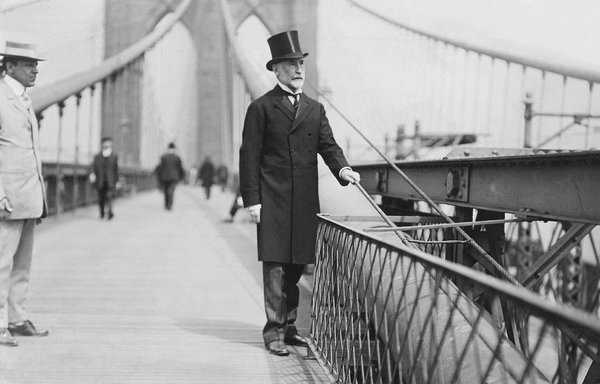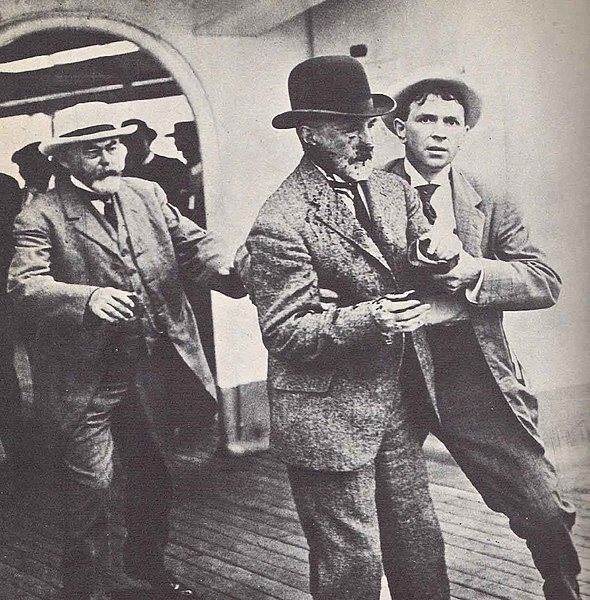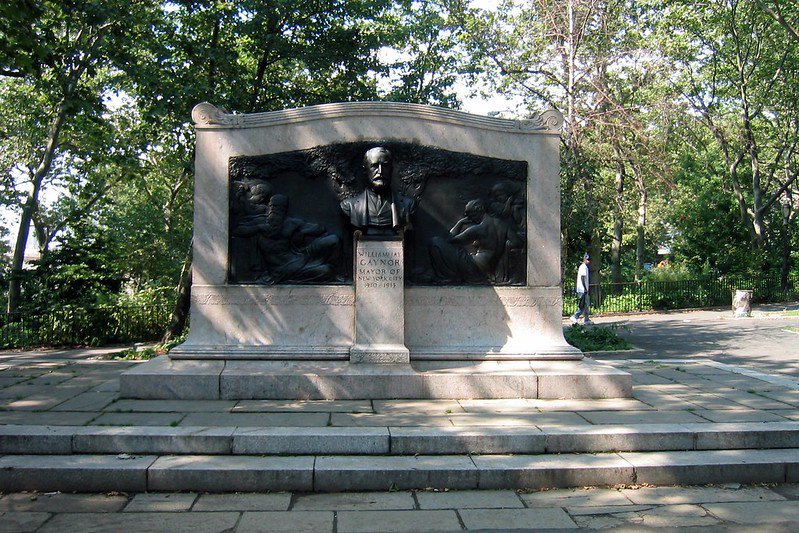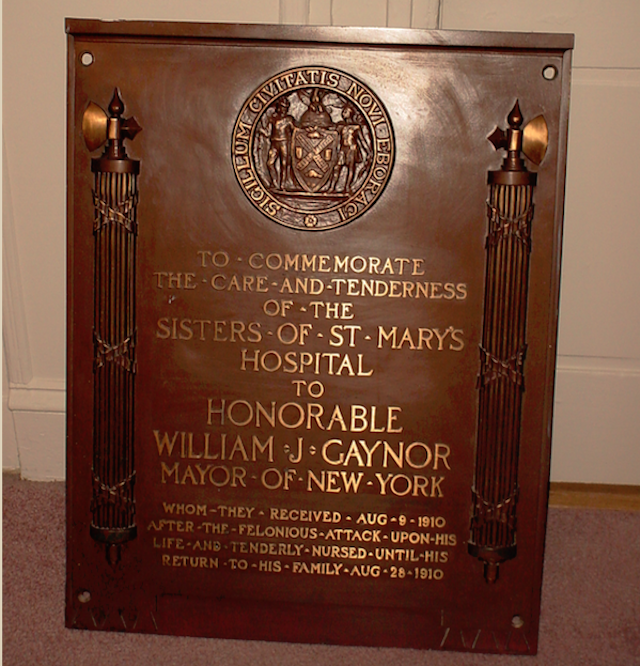In 1910, New York City Elected Its First Great "Walking Mayor"
Oct. 27, 2021, 3:04 p.m.
Eric Adams says he'll be the first biking mayor; in 1910, we got our first "walking mayor."

Earlier this month, Eric Adams declared that if he is elected he would ride a bike to and from City Hall on a regular basis, making him New York’s first “bike mayor” (while a couple of mayors have been spotted on bikes, "no one was a regular bike commuter," according to Evan Friss, the author of On Bicycles: A 200-Year History of Cycling in New York City.) We’ve been down this road before—over a century ago, Gotham was led by a chief executive who was our first great “walking mayor”: William J. Gaynor.
Gaynor, an honest and reform-minded Brooklyn judge before being elected mayor, lived near the Grand Army Plaza entrance of Prospect Park. This was years before New York mayors were given the use of Gracie Mansion as an executive residence.
Read More: Gracie Mansion Is Amazing. So Why Have Mayors Turned It Down From The Start?
Every morning, Gaynor—who was in his early 60s—would exit his home, stride down Flatbush Avenue, walk across the Brooklyn Bridge, and end his trip at City Hall. The journey was about 3.5 miles one-way, and in the evening he would walk the reverse route. He practiced this routine "not occasionally, not frequently — but every one of the working days of the year," wrote Edwin Wildman, a New York Times reporter who accompanied Gaynor on one of his Tuesday morning commutes in June of 1910.
Wildman’s detailed account of his walk and talk with Gaynor, published in the paper with a spread of photos, provides some insights about one of our best, but little remembered, 20th-century mayors. Gaynor, we learn, was a serious walker, not just a commuter.
“I start out from my house and take a ten, fifteen, or twenty-mile walk in the Brooklyn suburbs, often,” he told Wildman. "One shouldn't walk too fast,” he advised. “Walk evenly, moderately — and the best results are obtained.”
Regarding his City Hall trips, Gaynor said, “I usually walk alone — I prefer to, because I think better as I walk .… There are so many interruptions during the day. It is during these morning walks that I plan out the day's work.”
“I am never tired,” he remarked — several times — during his time with Wildman.
Gaynor said he was confounded by the commuting habits of most New Yorkers. "There's no excuse for any man with an office within three miles of his home not walking back and forth. Despite the fact that the offices and factories are crowded, and often illy lighted and ventilated, there is a mad rush for the overcrowded [street cars and subways] … If men would walk to their business, their health would be improved.” Gaynor shared some of his other habits for good fitness, like cold baths and only smoking socially.
Born in Oriskany, New York in 1849, Gaynor settled in Brooklyn in 1873, which was then an independent city. He become a lawyer and, in 1893, was elected justice of the New York State Supreme Court. In 1909, with the help of Tammany Hall boss Charles Murphy, Gaynor was elected the 94th mayor of the by-then-consolidated City of New York.
On the morning of January 1st, 1910, he walked to City Hall to begin his term — it was the first time in his life he had ever entered the building! As his tenure in office progressed, his independent streak and reform-leaning policies would make him an outcast from the Tammany machine.

Gaynor is largely forgotten today except by trivia buffs and historians of photojournalism. In August of 1910 — less than two months after his strolling interview with Wildman — while waiting for a friend on board a ship in Hoboken, Gaynor was shot in the throat by a disgruntled former city employee. He survived.
Purely coincidentally, a New York World photographer snapped a picture of the mayor a moment after the bullet hit. The remarkable candid photo is a rare example of an utterly unexpected historical event being captured on film before the age of high-speed photography.
Gaynor died of a heart attack in 1913, before he could finish out his term. He was buried at Green-Wood Cemetery, and an attractive monument to his memory can be found in Cadman Plaza near the Brooklyn entrance of the bridge he famously walked across each workday.

Gaynor was a learned, well-read, and philosophical man. During their walk, Wildman, the NYT reporter, asked the mayor for his thoughts as he viewed his growing city from the Brooklyn Bridge. Gaynor gave a reply that might give us pause as we grapple with existential problems like climate change. Adapting a reference from the British historian Thomas Macaulay, he said, “Some day a man from New Zealand, or where not, may sit upon a broken tower of this bridge and look over the ruins of a dead city. Why not? Civilizations come and go. But it will be a long time ahead. Babylon and Nineveh did not think they would ever perish, nor do we. But shall we not?”
Read More: Is NYC About To Get Its First Bike Mayor?
Author’s postscript: When Gaynor was shot he was taken to a Catholic hospital in Hoboken where he was treated and nursed back to heath. As a gesture of gratitude, Gaynor’s friends and supporters commissioned a bronze tablet that was mounted on a wall inside the institution. (The inscription began, “To Commemorate the Care and Tenderness of the Sisters of St. Mary’s Hospital….”)

In 2008, as the hundredth anniversary of the shooting was approaching, I decided that I wanted to see the plaque. But the hospital, I learned, had been torn down. Thus began a nationwide quest — conducted mostly by telephone — to find the tablet. I eventually tracked it down to the dank cellar of a Brooklyn Heights convent — coincidentally, just a few blocks from Gaynor’s official monument. I arranged for the plaque to be part of a temporary exhibit at the Museum of the City of New York that told the story of the Gaynor shooting.
Mr. Miscione is the former Manhattan Borough Historian.